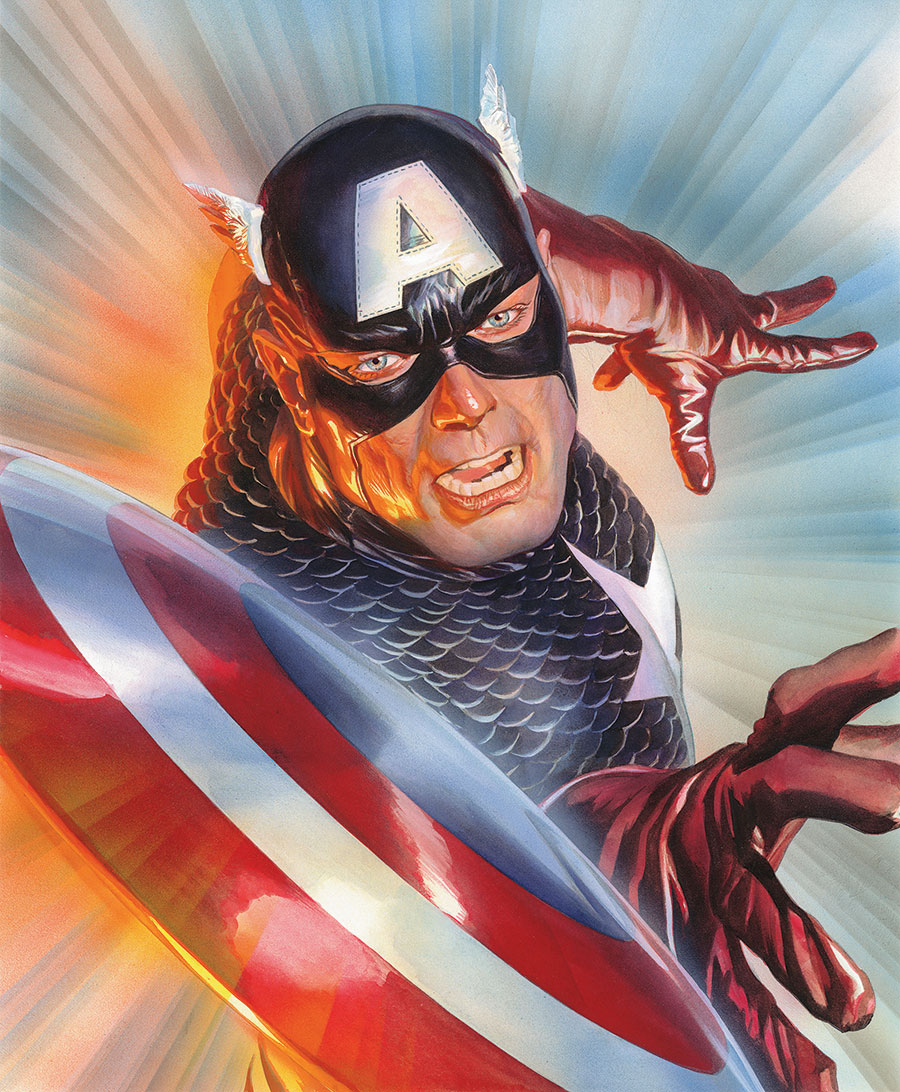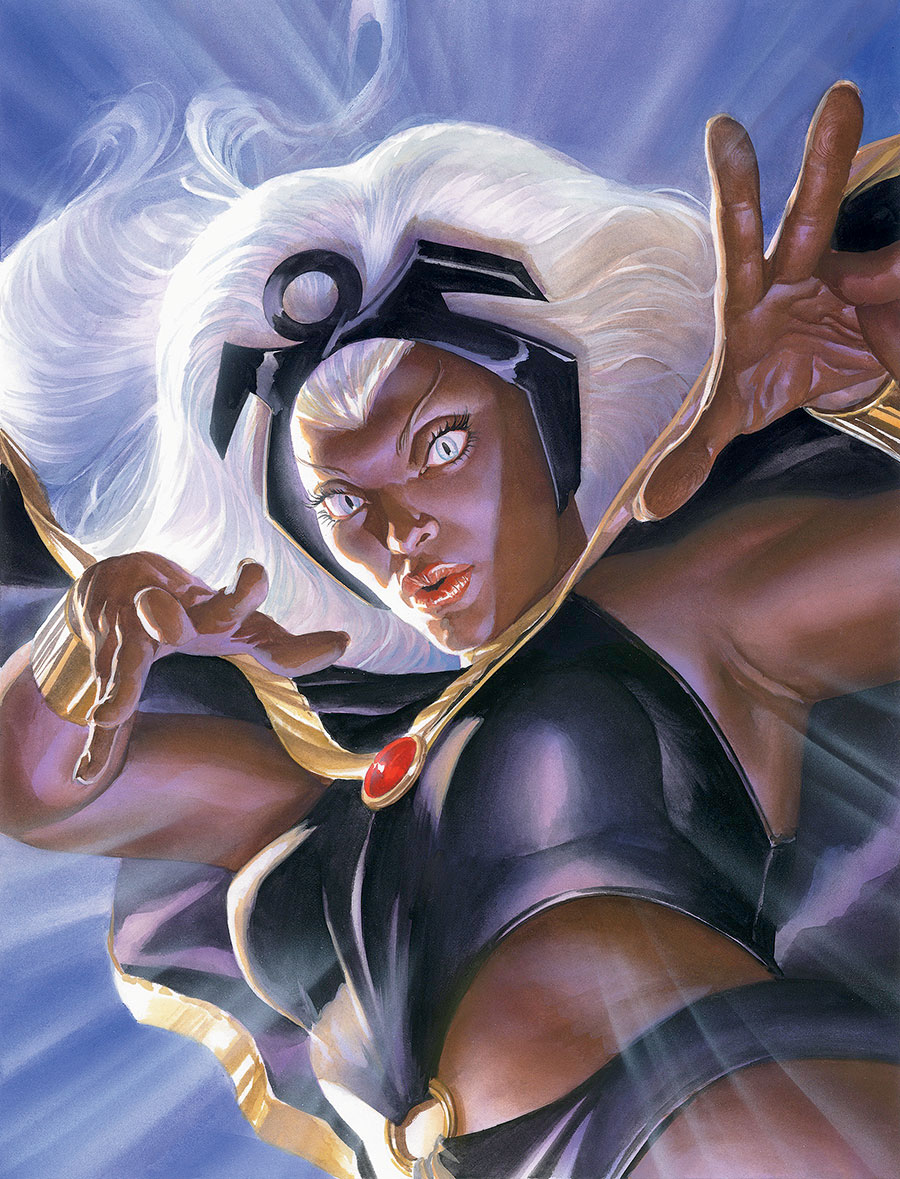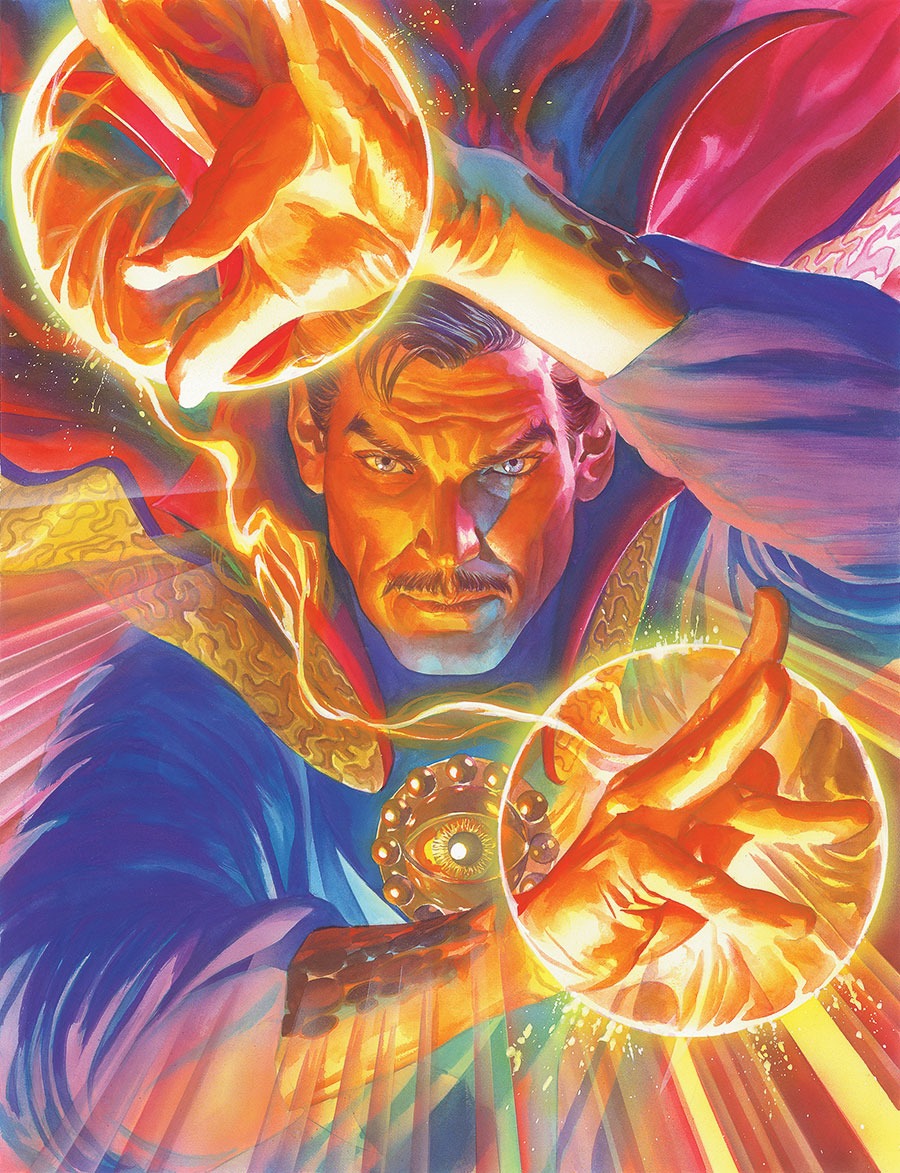Alex Ross changed the course of superhero stories. Hitting the scene in the early 1990s, when such comics were in a phase of hyper-exaggerated art, Ross and his fully painted approach offered a new vision of these fantastic concepts, referencing photographs of models to bring unprecedented realism to the genre.
It’s an approach rooted in Ross’s first exposure to superheroes as a child growing up in Texas, when he saw a live-action Spider-Man appear on the PBS children’s series The Electric Company. “That was the most uniquely exciting and abstract thing I’d ever seen, and I just wanted to be the character, to dress up as the character, and subsequently draw the character,” says Ross, who moved to Chicago at 17 to study at the American Academy of Art and now, at 53, lives with his family in a suburb he prefers not to name.

He would go on to create iconic images of Spider-Man, as well as the larger roster of Marvel heroes. Many of those will be on display in the Elmhurst Art Museum exhibition Marvelocity: The Art of Alex Ross, which runs June 3 to August 20. Featuring works spotlighted in Ross’s 2018 art book of the same name, the show was first seen in 2019 at Libertyville’s Dunn Museum.
“When you’re looking at the artwork, is it representing some portion of ourselves?”
Ross’s pieces combine the photorealistic painting style of Norman Rockwell with the dynamic composition of comic legends like Jack Kirby, the artist who designed the early look of the Marvel Universe. This fusion suggested how superheroes could be translated into live action at a time when Hollywood was wary of any projects involving costumed crusaders who weren’t Batman.
Ross credits such live-action adaptations with embedding these characters in the public consciousness. “You could take it as life when you’re seeing real people playing the parts,” he says. “It’s always been intertwined in my mind as I evolved as an artist: that I could graphically represent something on the page that would be akin to what you saw in live action.”
Ross first got a taste of this aesthetic from the painted covers of 1970s Marvel magazines like Marvel Preview and The Rampaging Hulk, but he would take it a huge step further with fully painted interior pages. Marvels, Ross’s 1994 miniseries with writer Kurt Busiek, depicted decades of superhero history from the perspective of regular civilians, all in Ross’s signature style. Showcasing his deep reverence for the genre and impeccable artistic craft, Marvels made Ross an immediate fan favorite.

Today, his art serves a different function in a time when even C-list superheroes make the jump to live action. What drives his recent work, Ross says, “is trying to reset where the baseline is, and rendering [superheroes] in a way that shows what that design was before it got corrupted by overthinking and overdetailing and molding — all the different things that Hollywood will do to it.”
Over the years, Ross has gained a deep well of experience creating new superhero designs, whether the wholly original characters of Astro City (also with Busiek) or future versions of Marvel and DC heroes in comics like Earth X and Kingdom Come, respectively. For Ross, the key is simple: Accentuate the body. “Ultimately, it’s a representation of the nude human form and our appreciation of our interior structures. This is something we inherently understand as an audience. When you’re looking at the artwork, is it representing some portion of ourselves? It’s an instinctive response.”

Ross continues to innovate in his artwork while also stepping into the writer’s seat, most notably in last year’s Fantastic Four: Full Circle, his graphic-novel tribute to Kirby. “He didn’t get the byline accurately displayed of what he contributed, and I needed to do that in honor of what he himself gave to this,” says Ross.
His own journey comes full circle in Marvelocity, which includes a short story in which Spider-Man traps and wallops his greatest enemies. It’s simple, playful, and full of reverence for the character, ending with the reveal that it’s all coming from the mind of a 6-year-old Alex Ross, playing with his action figures in front of his television set. That spirit still drives his work, emphasizing the wonder of these heroes as he finds new ways to reinforce their humanity.



